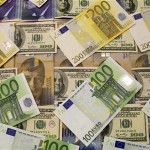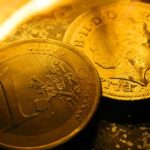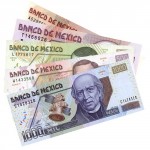 Gold traded near the $1 200 level, holding close to Fridays three-week high, as investors weighed global stimulus measures against the prospects of rising interest rates in the US. Investors eyed upcoming US GDP data, as well as the outcome of a Swiss referendum on central bank gold policy for more trading cues.
Gold traded near the $1 200 level, holding close to Fridays three-week high, as investors weighed global stimulus measures against the prospects of rising interest rates in the US. Investors eyed upcoming US GDP data, as well as the outcome of a Swiss referendum on central bank gold policy for more trading cues.
Comex gold for delivery in December traded at $1 196.8 per troy ounce at 8:02 GMT, having shifted in a daily range of $1 200.1-$1 195.0. Prices slid 0.17% to $1 195.7 on Monday.
Yesterdays decline came as the surprise hype from Fridays interest rate cut by the Peoples Bank of China faded. This followed after the Bank of Japan unexpectedly boosted its unprecedented stimulus last month, while the ECB pledged to battle low deflation, having already cut rates, bought covered bonds and asset-backed securities and offered long-term loans to banks.
Gold also had recently drawn support by rising central bank demand, including in Russia, although Ukraine decreased its holdings.
However, the Federal Reserve remained the main market driver, with gold set for its first back-to-back annual decline since 2000, as the central bank wrapped up its Quantitative Easing program at its October 28-29 meeting and prepared to raise interest rates in 2015. Albeit worrying of inflation still failing to reach a set target, FOMC members expressed optimism about the US economy’s recovery and emphasized that raising borrowing costs would depend on economic data.
Investors eyed todays key US economic figures to gauge the strength of the dollar and the recovery pace of the worlds biggest economy. The Bureau of Economic Analysis is expected to revise down its Q3 GDP annualized growth estimate to 3.3% from 3.5% previously.
Meanwhile, the Conference Board will likely report that US consumer confidence surged in November to the highest since before the beginning of the 2008 crisis, with the corresponding index expected to come in at 95.9 compared to 94.5 in October.
The US dollar index rose to a fresh 4-1/2-year high on Monday, but settled the day lower as the euro gained against the greenback. The December contract traded 0.08% higher at 88.275 at 8:02 GMT. Prices held in a daily range of 88.310-88.170. The contract fell 0.23% to 88.206 yesterday, having earlier risen to 88.515, the highest since June 2010.
Swiss referendum
Weighing on the yellow metal, an opinion poll showed that support for a Swiss referendum to change the Swiss National Bank’s gold policy fell to 38% in November from 44% in October, with 47% of voters opposing the measure, while 15% were undecided.
Under the proposal, the central bank would be banned from selling its gold reserves and should back at least 20% of its assets with the metal, up from 7.8% in October. If the vote were to be positive, this would drive physical demand for the precious metal, boosting prices up. The vote will be carried out on November 30th.
James Steel, an analyst at HSBC, said for CNBC: “The impact of a yes vote could quickly translate into prices and take gold as much as $50 higher.” And although rejecting the proposal is much more likely and expected, it could still push prices down, albeit not much, as it will reinforce the bearish trend, he added.
Assets in the SPDR Gold Trust, the biggest bullion-backed ETF and a proxy for investor sentiment toward gold, remained unchanged at 720.91 tons for a fourth day, an inch above November 13ths six-year low of 720.62.
Pivot points
According to Binary Tribune’s daily analysis, December gold’s central pivot point on the Comex stands at $1 197.2. If the contract breaks its first resistance level at $1 202.3, next barrier will be at $1 208.8. In case the second key resistance is broken, the precious metal may attempt to advance to $1 213.9.
If the contract manages to breach the S1 level at $1 190.7, it will next see support at $1 185.6. With this second key support broken, movement to the downside may extend to $1 179.1.





